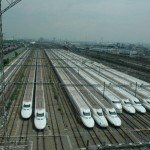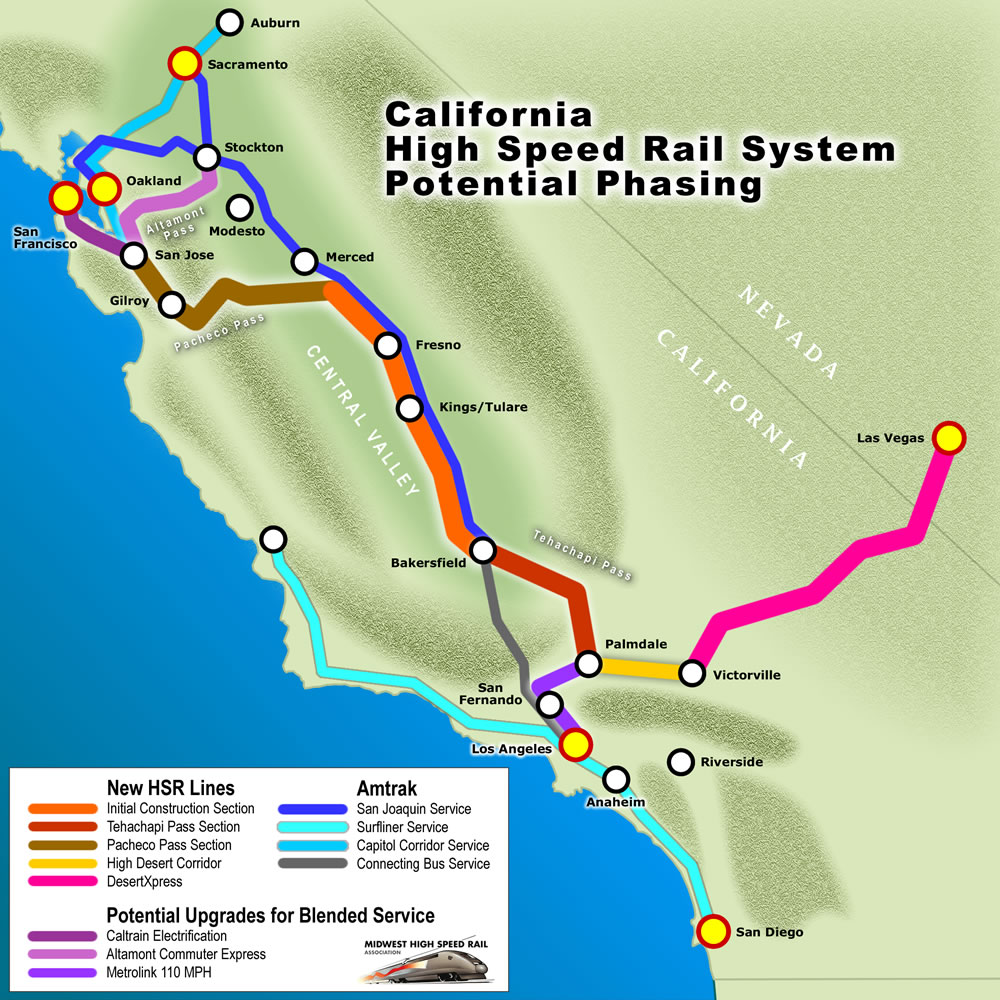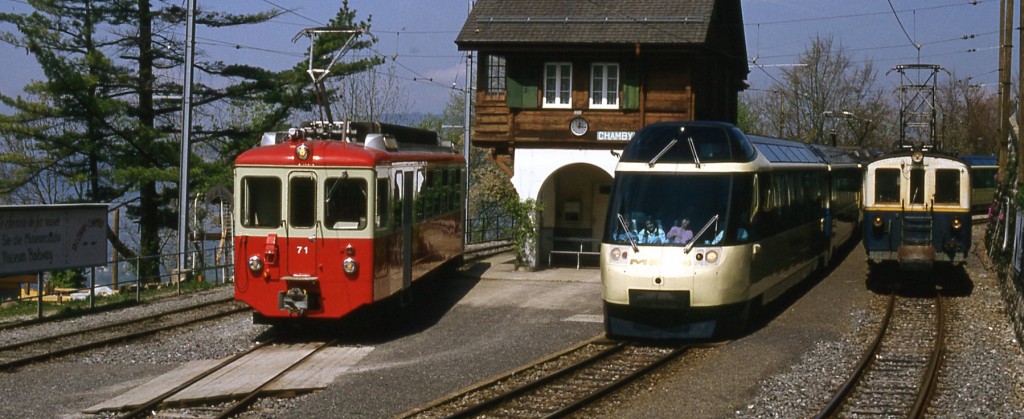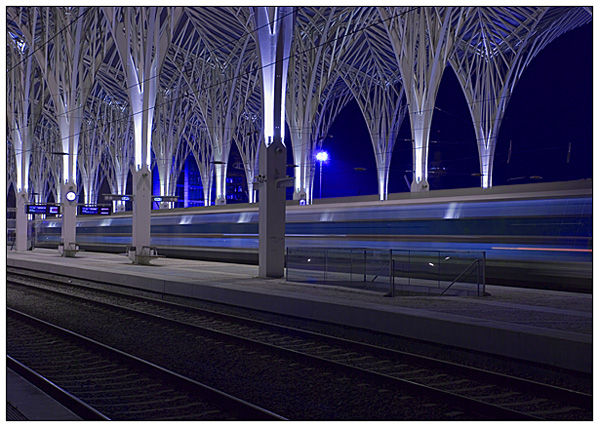Will the US have high-speed rail in the near future?
This is a question many people might be wondering. With all the new technologies being invented and the rapid modernization of our society, it is hard not to wonder why passenger trains have not changed much in the US over the last decade. As of 2014, the average Amtrak car was 30 years old, not to mention that the infrastructure was constructed in the 1800s (House of Representatives, 3.1). Compared to developed countries in Europe and Asia, where high speed rails and other new transportation technologies are being implemented, Amtrak still lags behind in terms of their train infrastructure and technology. Why is this? Will there be a significant change any time soon? If so what will be changing?
First of all as most people know, the United States is an automobile-centric society. After World War II, suburbia in American cities grew rapidly, leading to a higher demand for automobiles and roads. As a result, less people used trains for their primary source of travel, which in many ways led to today’s modern way of living.

Amtrak 04T, the Pennsylvanian, a daily run from Pittsburgh PA to New York City, puts on a smoke show as it leaves Harrisburg and heads east.
Source: Flickr; Mark Thompson
Another reason why the United States hesitates to invest in train infrastructure is due to the size of the country. Unlike Japan or France, the US covers a vast area of land, thus making it extremely expensive to invest in nationwide rail infrastructure. Also with the company’s poor economic success, Amtrak has not been able to attract any investors that could help buy new equipment and develop new routes. Because of all these factors, American passenger trains operate inefficiently using old equipment and infrastructure, thus losing popularity amongst riders.
The equipment used by Amtrak such as locomotives are in dire need of repair. The majority of passenger trains in operation today are old diesel locomotives that are known to have double the carbon emissions of the British rail system. According to the Committee on Transportation and Infrastructure, locomotive and car updates alone will cost several billion dollars. With the recent budget cut from 1.4 to 1.1 billion dollars, Amtrak will probably have trouble affording any of these expenses ( 93). At the same time, the government’s implementation of strict policies and laws further the difficulty for Amtrak to be successful (Due, 539).
However, the government cannot be entirely blamed for the lack of funds and inflexible laws. While the annual budget is tight for Amtrak, the rail company does not use its funds efficiently. If Amtrak developed a comprehensive budget control strategy, the company would be more financially sufficient (CTI, 94). Implementation of this strategy nationwide would not only reduce costs but also improve the performance and quality of the company. Even though travel via rail has become more popular over recent years, the ridership has not significantly increased due to the poor performance and services. Therefore, between the unwillingness of the government to invest in passenger rail, the large expenses needed to update the rail system, and the economic inefficiency of Amtrak, the improvement of passenger rail in the United States is at a standstill.
All Aboard Florida
If neither the government or private investors are willing to invest in the national rail system, is there any hope for the future of American rail? According to Henry Graber, privately owned high speed rail is the key to success in the passenger rail industry. Before the emergence of Amtrak, privately owned passenger rail was profitable and self sustaining. Once the passenger rail was publicized, the quality and efficiency began to decline. More recently in Florida, the construction of All aboard Florida, a privately owned high speed rail operating between Miami and Orlando has been the model for revitalization of the private American passenger railroad.
Independent from Amtrak, All Aboard Florida is expected to be profitable and raise value of real estate around its stations (Graber). It will also be more punctual, thus raising preference of trains over the automobile. Even though the project is extremely expensive, the heavy usage of this rail is anticipated to pay off the loan and therefore, would not affect tax payers. This one high speed rail example which will begin operation in 2017, will demonstrate the high success of smaller private railroad companies in the United States.
According to Simon Van Zuylen-Wood, the creation of public railroad like Amtrak was never meant to be economically successful. Rather, Amtrak was created to act as a temporary buffer to eventually abolish the US passenger rail system altogether. Fortunately, the activism to keep the passenger railroad in operation has prevented the government from shutting down the passenger rail lines. On the other hand, Amtrak has created a common misconception that passenger rail cannot be profitable. With the increasing demand for transportation, it is likely that these high speed rail systems will prove the high success rates of private high speed rail.
California High Speed Rail
As most people probably know, Florida is not the only state building its own passenger rail lines. According to the the San Francisco County Transportation Authority, or the SFTCA California is in the process of building a 200 MPH high-speed rail between Sacramento and San Diego, totaling a length of 800 miles. This might sound similar to the Northeast Corridor high speed rail between Boston and Washington DC. However in addition to building this high speed rail, the California Transportation Authority is planning to collaborate with regional partners to implement a state-wide regional rail modernization project. Even though this will be a costly investment, in the long run, state government agencies believes that statewide rail redevelopment will not only pay back the costs, but will in the end be quite profitable.
When the rail system is modernized, easy mobility between towns and cities will boost economic development throughout the state. By converting from diesel to electric locomotives and using renewable energy, this improved rail system will not only be a faster and more efficient way of traveling, but will also have minimal carbon footprint, thus leading to a cleaner environment.
Unfortunately, the process of building the railroad has not been easy. According to the Economist, the SFTCA has experienced many unsuccessful attempts to secure funds and grants for completing the construction of the railroad. According to Flyvbjerg, high-speed rail is known to be one of the most expensive types of infrastructure to build (282). Thus many private investors are discouraged to invest these large sums of money into the construction process. Even though the project has progressed slowly, it has been difficult to continuously build with limited funds. Luckily, more recently China’s president Xi Ping has promised to invest in California’s high speed rail between Los Angeles and Las Vegas (The Economist). While the Chinese government agreed to finance the project, they also made the US agree to use Chinese rail construction companies. This investment would thus not only help the US, but will also benefit the Chinese. Once the Californian high speed rail is successfully completed soon, the state could be a role model for future states to build their own high speed rail.
Texas High Speed Rail
While Florida and California continue to build their high speed rail systems, an unexpected candidate, Texas has recently showed interest in building high speed rail between Dallas and Houston. Even though Texas has the reputation of being pro-automobile, the increasing population of major Texan cities has triggered a higher demand for intercity transportation. Austin for example is developing and improving its intercity public transit systems to sustain its growing population (Mueller, 2). While Houston and Dallas are also developing their intercity transit systems, they have recently started to see higher traffic between the two cities.
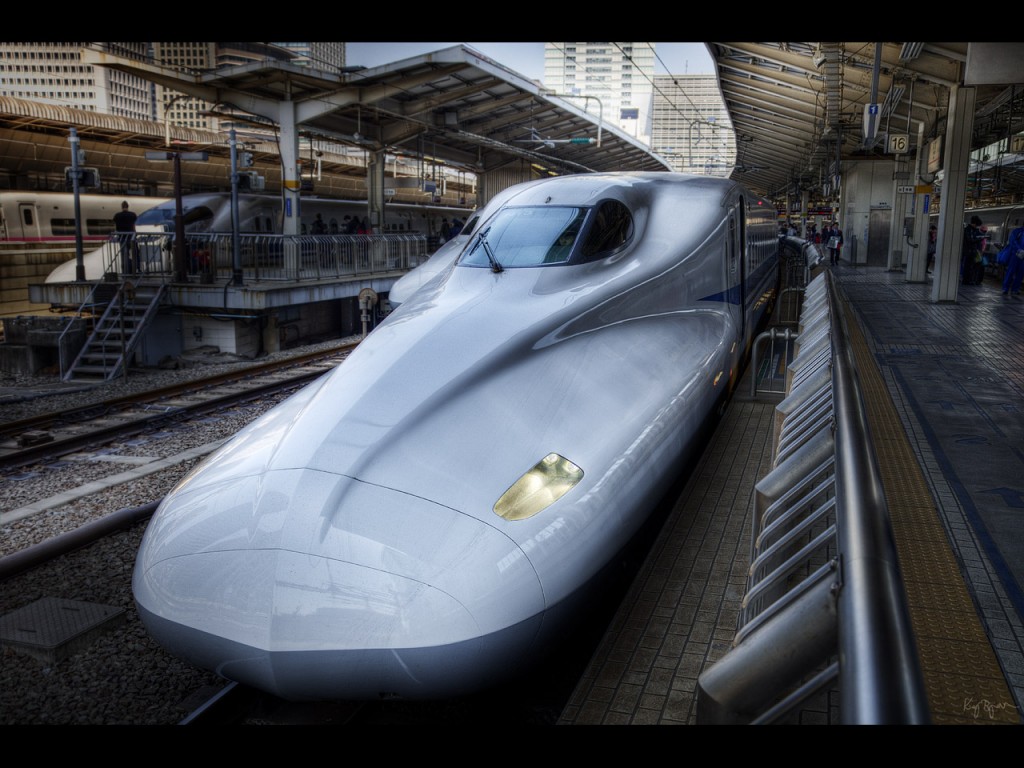
Source: (Flickr) Kaj Biurman
The Japanese newest Shinkansen that runs at a maximum speed of 200mph. Thins is what Texas is planning to use for their new high speed rail system
The state government has recently took interest in high speed rail to reduce the automobile traffic. According to Aman Batheja, Texas is planning to build its high speed rail system primarily through private investment. They plan to use the Japanese Shinkansen that would operate at over 200 MPH. At the same time, China along with other countries have shown increasing interest in the new project due to the expected high investment returns. Once the Dallas-Houston rail starts operating, hopefully by 2021, the successful business will encourage foreign investors to provide funding for the construction of future projects.
The unknown future of the NEC…
If high speed rail systems are being proposed and built in western and southern states, why hasn’t there been any attempt to redevelop the rail system in the densely populated northeast? According to Amtrak, the North Eastern Corridor, abbreviated as the NEC is one of the most well used rail systems in the United States. For this reason, the NEC is the only route that is actually covering its own costs, though it is still unable to make any profit ( 2012, p.16-17). While the ridership has doubled over the past 30 years, the ancient infrastructure used to transport the passengers is unable to withstand any more burden (Fitzsimmons & Chen).
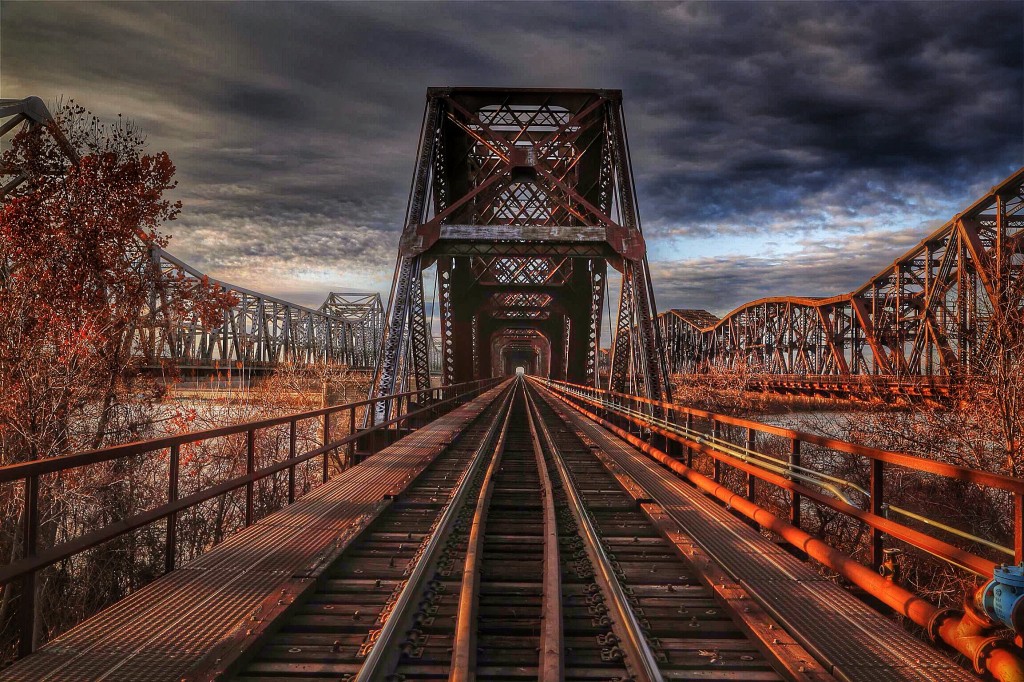
The infrastructure of the Northeast Corridor Rail is very old, much of which is in need of repair. Source: Flickr; f8inmemphis
Almost every week, there is some kind of technical issue that delays its passengers. Sometimes, these infrastructure issues can shut down the corridor, not only causing frustrating experience for the passengers, but also causing a $100 million cost of economic losses. Due to the hazardous infrastructure, the so called express trains are required to drive at 30mph through parts of the trip. According to the Economist, governor Andrew Cuomo has tried to create a high speed railway system in New York State that would connect to the NEC. Unfortunately, due to the lack of cooperation from the federal government and private rail companies, the state has been unable to make the proposition a reality. However, with the popularization of high speed rail in other parts of the country and the overall increasing demand for public transit, it is likely that the northeastern states will eventually adopt the new rail system.
Future vision of American railroad and cities.
If high speed rail is to continually develop in the US, what will the future look like? Because the United States is a vast country, it is unlikely that a cross continental high-speed rail will be built. Rather, it is more likely that these lines will be built between major cities. At the same time, the development of high speed rails does not mean the abolishment of slow trains. Rather, as stated by the California plan, regional routes will connect smaller towns and cities to the major routes which will be located in major cities. Since these high speed rails cannot have any interruptions between stations, the rails will either be elevated or underground to prevent any accidents. On the other hand, regional routes will not change much and will still operate on ground level (Chang). While these high speed trains will shorten travel time and eliminate the driving stress, the cost will also be quite reasonable. According to Henry Grabar the estimated cost to ride the high speed rail would be the same as driving a car to the same location. Therefore, even though high speed trains are a costly investment for a country, the long run benefits are worth the price.
As population will continue to increase in the United States, urban areas will start to become more important. During the 1950s and 2000s, people had the luxury to move to suburbs where they would live independently from one another. However, with the continuously growing population and diminishing resources, people will eventually have to become more interdependent and sustainable as a community. Cities will thus have to implement smart growth strategies to make cities more compact and efficient (Fishman, p.30~31). At the same time, cities will also have to become more connected. In other words, the future cities will have to be better connected together via high speed rail. This would not only prepare us for the future, but will also create a society that is more sustainable.
Conclusion
High speed trains are becoming more popular throughout the world. Countries like Japan, China, France, Germany, and Taiwan have been continuously developing their high speed rail systems and implementing this new technology nationwide.
Even in a country like the United States where the automobile is the king of transportation, many people are starting to realize that investing in high speed trains can boost the country’s economy. Places like California, Florida, and Texas are trying to implement these technologies to connect major metropolitan areas. Unfortunately densely populated areas like the North East Corridor have not yet recognized the potential and opportunities they might gain by building a high speed railroad system. While there has been some effort to implement the technology throughout the United States, investors and the government agencies have been doubtful about the possible benefits due to the high costs of construction. However, keeping cities connected through public transportation and other communication systems is a necessity to have a successful national economy (Yaro, 159). Especially with an increasing percentage of population moving to urban areas, the idea of having well-connected cities is even more important than ever.
Work Cited
- Amtrak Management: Systemic Problems Require Actions to Improve Efficiency, Effectiveness, and Accountability: Report to the Chairman, Committee on Transportation and Infrastructure, House of Representatives. Washington, D.C.: GAO, 2005. Print.
- Batheja, Aman. “Texas Rail Prospects Tempt French, Chinese, Japanese.” Texas Rail Prospects Tempt French, Chinese, Japanese. The Texas Turbine, 11 Nov. 2015. Web. 13 Nov. 2015.
- Chang, Tilly. “California High-speed Rail Project.” California High-speed Rail Project. N/a, n.d. Web. 13 Nov. 2015.
Due, John F. “The Passenger Train in the Motor Age: California’s Rail and Bus Industries, 1910-1941.” American Planning Association.Journal of the American Planning Association 62.4 (1996): 539. ProQuest. Web. 1 Dec. 2015.
Edgcumbe, Rob. “Building a Sustainable Fleet for the Future.” Amtrak Fleet Strategy 3.1 (2012): n. page. Amtrak. Amtrak, 12 Sept. 2012. Web. 13 Nov. 2015. - Fishman, Robert. Urban Utopias in the Twentieth Century: Ebenezer Howard, Frank Lloyd Wright, and Le Corbusier. New York: Basic, 1977. Print.
- Fitzsimmons, Emma G., and David W. Chen. “Aging Infrastructure Plagues Nation’s Busiest Rail Corridor.” The New York Times. The New York Times, 26 July 2015. Web. 13 Nov. 2015.
- Flyvbjerg, Bent, Skamris Holm Mette, and Soren Buhl. “Underestimating Costs in Public Works Projects: Error Or Lie?” American Planning Association.Journal of the American Planning Association 68.3 (2002): 279-95. ProQuest. Web. 1 Dec. 2015.
- Grabar, Henry. “The Triumphant Return of Private U.S. Passenger Rail.” CITYLAB. The Atlantic, 17 June 2014. Web. 13 Nov. 2015.
- Mueller, Elizabeth. “Creating Inclusive Corridors: Austin’s Airport Boulevard.” Creating Inclusive Corridors: Austin’s Airport Boulevard. N.p., Apr. 2012. Web. 13 Nov. 2015.
- W, A. “America’s Rail Fail.” The Economist. The Economist Newspaper, 28 July 2015. Web. 13 Nov. 2015
- W, A. “Applying a Brake to High-speed Plans.” The Economist. The Economist Newspaper, 26 Nov. 2013. Web. 13 Nov. 2015.
- W, A. “A Bleak Future.” The Economist. The Economist Newspaper, 07 Feb. 2014. Web. 13 Nov. 2015.
- W, A. “China Invests in America’s Rail.” The Economist. The Economist Newspaper, 23 Sept. 2015. Web. 13 Nov. 2015.
- Yaro, Robert D. “Metropolitanism: How Metropolitan Planning Has Been Shaped by and Reflected in the Plans of the Regional Plan Association.” N.p., 5 May 1999. Print.
Zuylen-Wood, Simon Van. “How Washington Derailed Amtrak.” National Journal. National Journal, 17 Apr. 2015. Web. 01 Dec. 2015.

